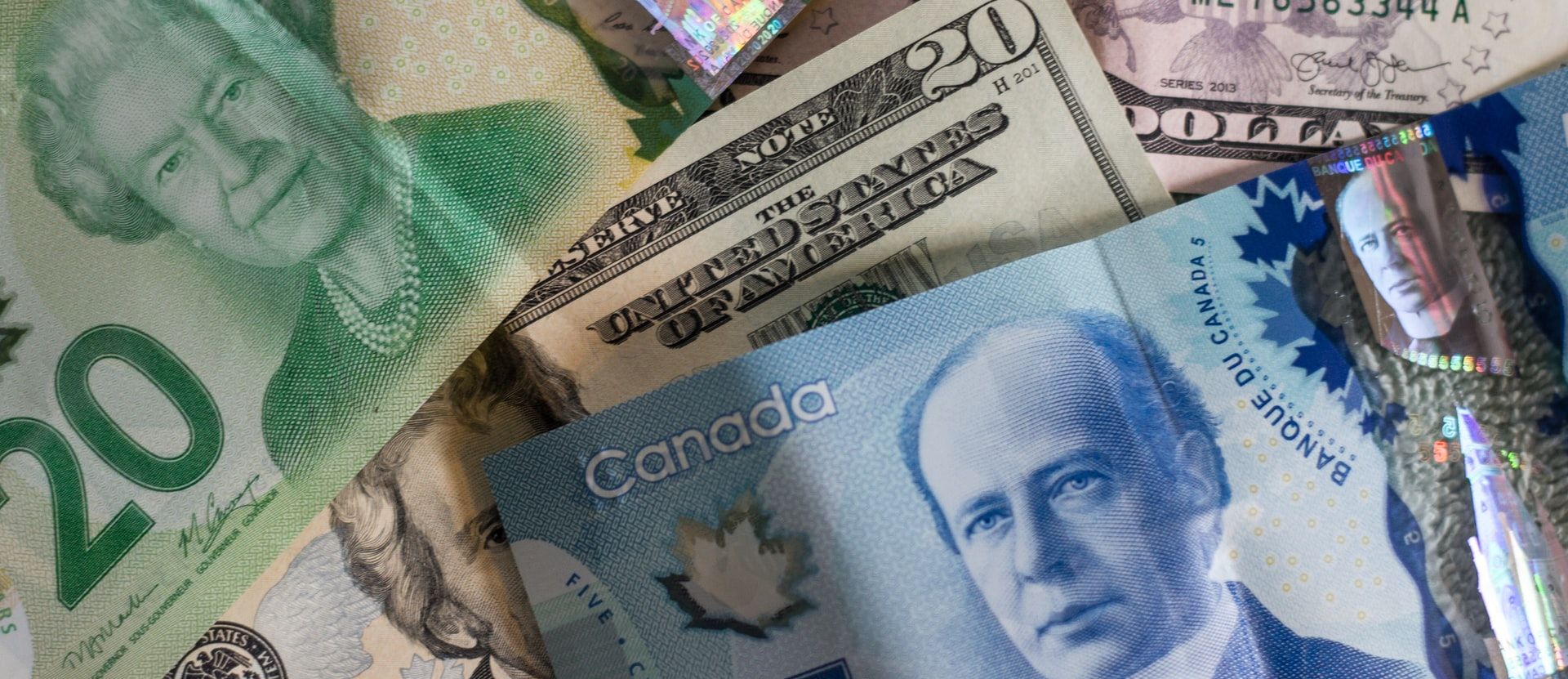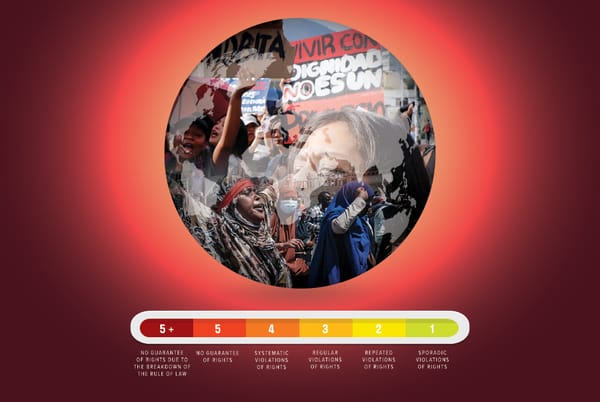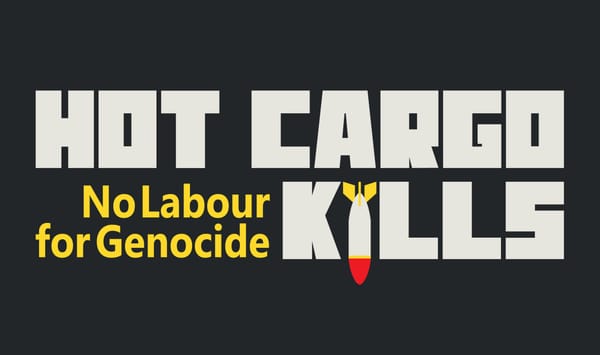
Over the past few weeks, it’s been hard to escape “inflation mania.” After decades of slow economic growth, suddenly many commentators and right-wingers are in a full meltdown over 4.7 per cent inflation as the recovery chugs along, post(?)-pandemic.
Unsurprisingly, the sudden rise in prices has produced a political fight over inflation’s causes and implications. The right is grasping for an opportunity to attack what it sees as “runaway” government spending and workers demanding too much. Meanwhile, some on the progressive left are — rightly — debunking the claims, first that the current bout of inflation is driven by spending or wages, and second, that it portends economic ruin. Beyond the technical squibbling, however, fights over inflation are rarely about it alone. Rather, conflicts over inflation are a conduit for class struggle.
Let’s get a few technical points out of the way. First, while it’s true that inflation is currently above the Bank of Canada’s midpoint target of 2 per cent, it’s also the case that the Bank has fallen short of that target frequently since the Great Recession in 2010. Low inflation harms working people through slow job and wage growth, but this doesn’t garner media attention like the wealthy and their political representatives whining about high inflation.
Second, although overall wage growth has improved over the past two years, it’s unequivocally not the case that wage demands are causing inflation. The same is true for pandemic fiscal stimulus spending. In other words, our current inflation is not “demand-driven.” Rather, it’s the result of supply shortages and other disruptions stemming from the pandemic and a difficult economic reopening.
Alongside temporary supply chain issues, such as clogged ports and unloaded shipping containers, a main driver of this current episode of inflation is high energy prices, which have risen 25.5 per cent relative to October 2020. Moreover, gasoline alone is responsible for nearly 42 per cent of the yearly change in inflation, while meat accounts for roughly another 10 per cent. This is very much a “sector-specific” problem, which means it’s likely to be transitory — though how long exactly the problem will persist is up for debate. Moreover, when these volatile consumer items are stripped out of the Canadian Consumer Price Index, the current inflation rate drops down to 3.3 per cent.
These facts haven’t stopped Conservative politicians from droning on about reckless government spending and a labour shortage in part caused by over-generous income supports. Despite all evidence to the contrary, former Consersative finance critic Pierre Poilievre continues his daily diatribes about “inflationary deficits,” referring to inflation as a “regressive tax.” Federal Conservative Party Leader Erin O’Toole’s first response to last week’s Throne Speech was to accuse the Liberals of “fueling inflation.”
This is nothing new: Conservatives and neoliberals have historically used inflation — or panic about inflation — as an opportunity to impose their political-economic programme of austere spending cuts and repression of labour. During the late 1970s and early ‘80s, governments throughout the West “tamed inflation” by repressing labour, slashing social spending and drastically raising interest rates to purposefully drive economies into recession and generate high levels of unemployment.
Without an adequate left political response — both to temporary inflation and to the political right — there’s a risk that a similar process could unfold now, which would curb the pandemic recovery and harm workers in the process. This is particularly true if right-wing forces are able to capitalize on working-class economic anxiety about the rising costs of consumer necessities, such as fuel and food.
Responding To Workers’ Concerns
In the near term, we aren’t in any objective inflationary crisis. It’s important to keep this point front and centre. Nevertheless, insofar as sector-specific inflation is harming workers — and in turn potentially making them receptive to the right-wing narrative that inflation is a problem only solved by spending cuts and wage restraint — it demands a coherent and empathetic left response.
The fact that much of current inflation is being driven by elevated fuel and meat prices puts the left in a difficult position. Because both direct fossil fuel consumption and meat production need to be drastically reduced in order to avert climate disaster, the political optics of demanding cheap fuel and meat aren’t ideal. Though, in the short term, it may be desirable and equitable to call for something like targeted fuel subsidies to aid low-income households who spend a larger share of their total income on utilities.
The right has typically been much better positioned to respond to issues like rising consumer prices — both because they largely address their base as consumers rather than workers, and because they, by and large, aren’t concerned about the environmental impact of their policies.
However, the causes of our particular inflationary episode (such as it is) also make it quite revealing. In miniature, we’re witnessing what a partial environmental transition with no concern for the latter’s impacts on the working class could look like. For example, taxes on environmentally harmful, but necessary, products will raise prices for carbon-intensive consumer items and hit workers and those with low incomes hardest, in much the same fashion as is currently taking place.
Without a class politics that offsets the costs of the transition away from carbon-intensive consumption with universal social programs, robust cash benefits and high-wage and unionized green jobs, workers will be susceptible to the political right’s messaging about both environmentalism and inflation. In short, this is what those on the left mean when we say we need a “just transition” that builds a working-class base.
In the current moment, we need political interventions that respond to workers’ material concerns and don’t dismiss the ways in which high prices for consumer necessities disproportionately harm low-wage workers. Without this, we leave workers open to the political framing and false solutions offered by the right.
A Recovery That Puts Workers First
Government spending during the pandemic prevented the Canadian economy from descending into depression — though of course, much more could have been done and pandemic income supports to the working class were reduced and then cut too soon. Moreover, the Liberals have already indicated that they plan to be far less ambitious in the years ahead, despite self-congratulations about their pandemic economic triaging.
For the fiscal conservatives, tepid Liberal restraint is never punishing enough. The Conservative Party and all those in the commentariat committed to economic orthodoxy see an opportunity to capitalize on transitory inflation to (falsely) indict profligate spending. If they can’t successfully spin this momentary inflationary panic to pressure the government to re-impose austerity, then perhaps they can at least further limit the Liberal’s spending commitments.
Caving to inflation mania now and letting any further air out of the tires of pandemic recovery will only cause further harm, which will be borne disproportionately by the working class in the form of unemployment, stagnating wages and social service cuts.
We need to counter inflation panic with a vision of a post-pandemic economic recovery that puts workers first, emphasizing the need to increase public spending to make life more affordable for the working class. Implementing public childcare across the country, passing universal pharmacare and permanently fixing and expanding Employment Insurance should be the central pillars of the fight for a workers’ recovery, along with renewed investment in green job growth. If we have to fight on the terrain of “affordability” in the short-term, let’s use it as an opportunity to expand the social safety net and push for investment in green jobs.
The Class Politics Of Inflation, Now And In The Future
As much or more than supply chain disruptions, corporate profiteering is an integral part of the explanation for our current above average inflation. Corporations are using the moment of supply shortages to engage in historic price increases. Thanks in part to relatively strong stimulus spending during the pandemic, corporate profits in Canada grew from $291 billion in 2019 to $382.7 billion in 2021, the largest two year increase in a decade.
This is how capitalists respond to shortages, particularly after deregulation has allowed them to dictate the terms of trade and harm workers and consumers in the process. In global shipping, pandemic profiteering has been unmistakeable. As Robert Kuttner at the American Prospect reports, “The container ship industry booked net profits in the third quarter of 2021 of a mind-blowing $48.1 billion, a ninefold increase over profits in the third quarter of 2020, which were already a record.” In other words, price-gouging is a central part of the current inflation story, though you’re not likely to hear much about it in the mainstream news media.
At this point of generalized left weakness, broaching something like price controls to deal with selective high consumer prices and pandemic profiteering is likely beyond the pale. Moreover, decades of attacks on labour have resulted in a situation where much of the North American movement, particularly in the public sector, in all likelihood fears the prospect of attempting to bargain wage increases in line with inflation above 2 per cent. Wage increases of 20 per cent over five years, plus bonuses, recently won by United Auto Workers members at John Deere in the United States, are a welcome piece of good news on this front, but whether or not similar victories become more widespread remains an open question.
Moreover, current battles over pay, and inflation, are being waged against the backdrop of a precipitous fall in labour’s share of total income. As Tim Barker insightfully points out, the struggles over labour’s income share and inflation are intimately related. It was precisely when the organized working class managed to drive up total labour income to historic highs in the 1970s that the forces of capital and economic orthodoxy threw all their might behind breaking the back of labour and restoring profit levels. In Canada, labour’s share of total income has been on a downward trend for decades, declining from a high of 77.1 per cent in 1972 to 65.5 per cent in 2019. This is one of the largest declines among developed economies, larger even than in the U.S.
Historically, inflation has tended to be the nemesis of the left and the labour movement. The unfortunate truth is that our program, when pushed to its logical end, tends to be “inflationary.” When workers have substantial organized power and can demand high wages and high levels of social spending, the capitalist class responds by driving up prices, curtailing investment, or using whatever options the market provides them to counter the power of labour. If their profitability woes get bad enough, they will pressure the state to intervene — to raise interest rates, to cut public spending, to restrain public sector wages and to more generally attack collective bargaining rights. In other words, capitalism places limits on how much power workers can ultimately exercise. This is precisely why the left opposes it.
Our current conjuncture is far removed from the economic situation of the mid-to-late ‘70s, when labour was at its apogee and governments and the business class throughout the West were in pitched battles against “inflation,” i.e. against the organized power of the labour movement. However, this current episode of inflation panic does provide a window into how equipped the left is to respond to the usual right-wing talking points.
Should the left ever build the power necessary to win an expansive agenda, don’t be surprised if we see the kind of “demand-driven” inflation of previous generations. In that event, we’d better have our political and policy responses worked out.
Fights and supposed “crises” over inflation are never simply about technical, economic problems like whether or not there is too much money in circulation or demand is outstripping supply. Rather, “inflation mania” is representative of a much deeper class struggle over the distribution of society’s resources. We shouldn’t forget that it isn’t the left’s objective to manage capitalism better than the capitalists; our goal is to build the power and capacity of the working class. If (or when) we do so, we will necessarily generate crises in the functioning of capitalism, of which inflation is one example. The point is to be prepared and use these crises to demonstrate the need to go beyond capitalism.
Current inflation panic is therefore an opportunity for the left to offer a near-term economic programme that addresses the immediate material needs of workers. But it should also encourage us to think through what would actually be required to respond to a real inflationary crisis brought on by the organized power of labour. Building that level of power is, ultimately, our goal.







